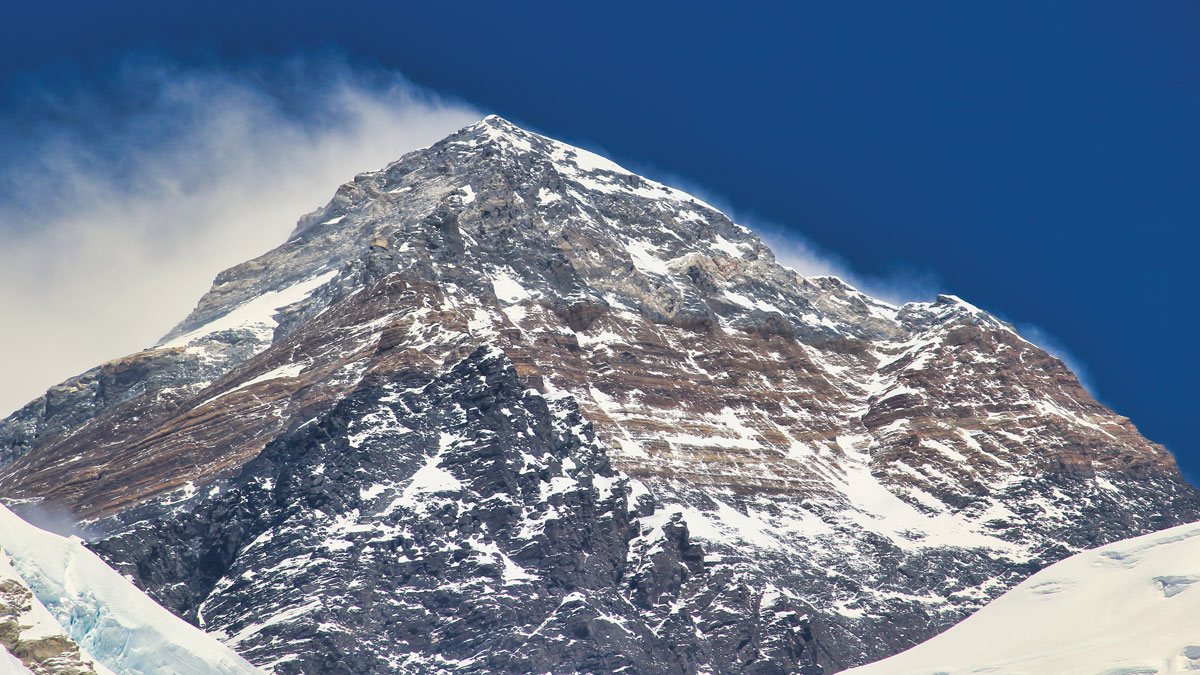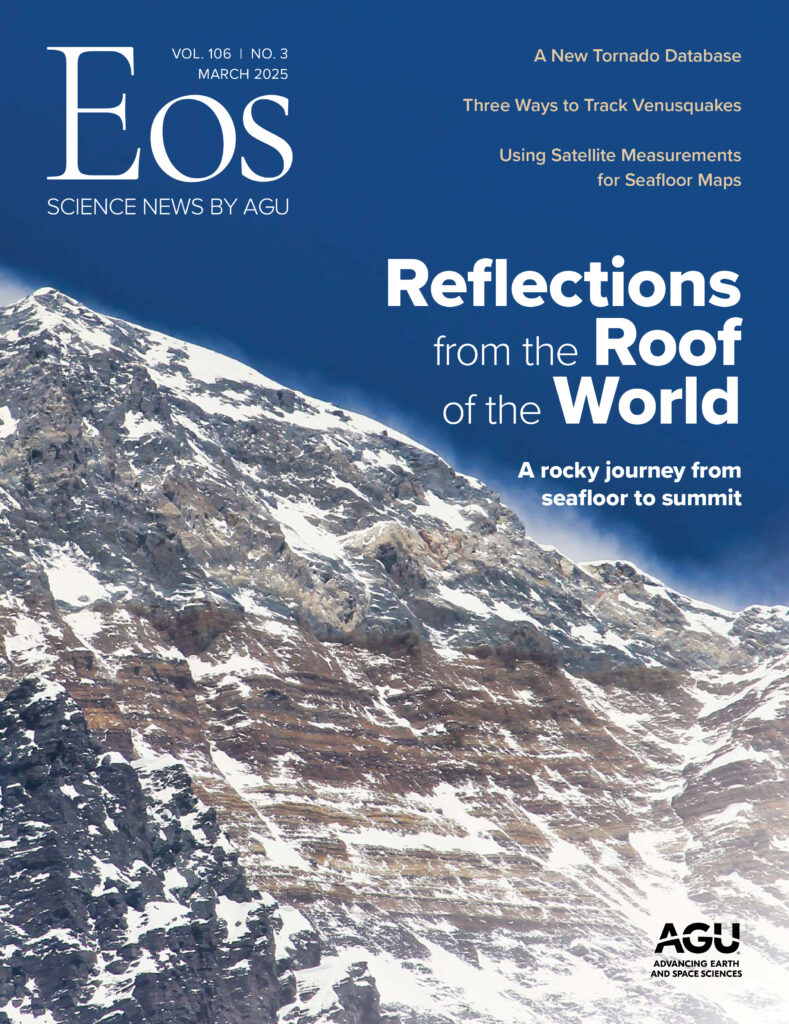The summit of Mount Everest is the highest elevation on our planet, hardly obscure but still a mystery: Geoscientists continue to puzzle over the mechanisms that moved (and continue to move) the mountain. Join them as they dig deep into jet stream highs while investigating “How to Build the World’s Highest Mountain.”
Other stories in this issue explore how Everest and the rest of the Himalayas are casting long shadows both north and south. To the north, climate change and global energy demands are redefining China’s approach to managing mineral resources in the northern Tibetan Plateau (“Concerns over Lithium, Water, and Climate in Earth’s Two Highest Deserts.” To the south, melting ice packs are making “Millions in India Vulnerable to Glacial Lake Floods.”
From summit fossils hinting at an ancient ocean to satellite data modeling future floods, geoscientists are using innovative tools and intellectual acumen to better understand Everest and the roof of the world.
—Caryl-Sue Micalizio, Editor in Chief


